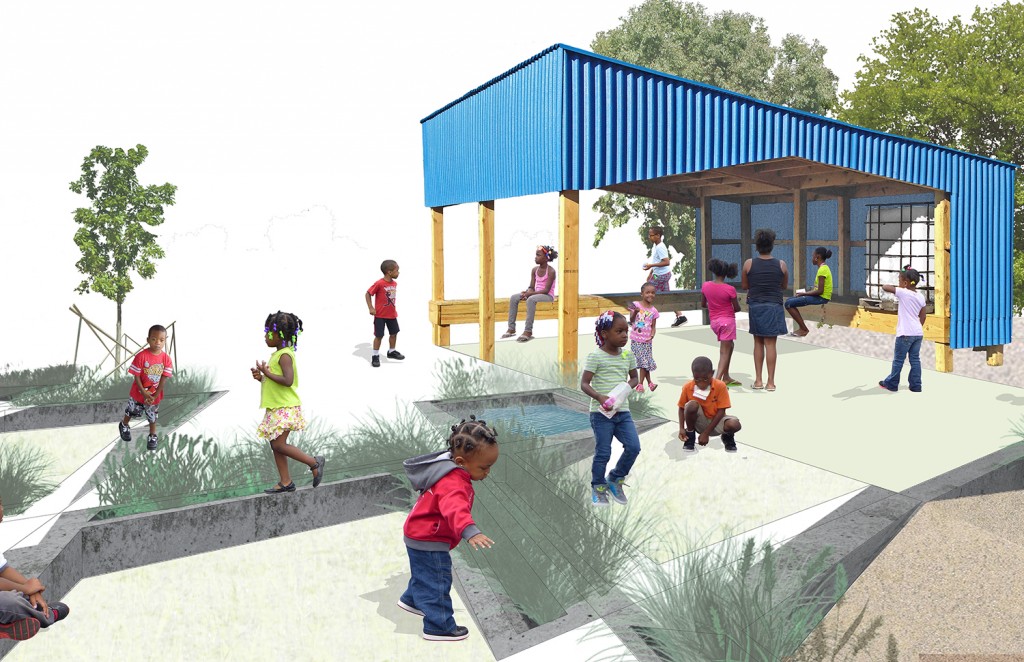Grounds for HOPE
In Collaboration With:
Sponsored By:
Client:
Investigators:
Research Assistants:
Dates:
Graham Environmental Sustainability Institute ($30,000)
Focus:HOPE
Craig Borum (Architecture), Aline Cotel (Engineering), Robert Grese (School of Natural Resources), Lorelle Meadows (Engineering)
Maria Capota, Leigh Davis, Lin Lin, Le Nguyen, Katharine Pan, Anna Schaefferkoetter, Andrew Wolking, Wen Zhong
February 2012- July 2013 (initial research)
July 2013 – ongoing (public space design)
Grounds for HOPE explores the agency of design in long-term declining cities, like Detroit, where it remains a contentious area of practice and study for the many disciplines engaged in the condition of the “urban”. In this contested and uncertain ground of operation, the architect performs a key role as instigator of new futures that consider the site of intervention beyond the established parcel boundaries, capitalize on existing urban systems, navigate contradictory policies and conflicting economic interests, and articulate the synthesis of environmental and cultural agendas through the generation of a collective and integrated vision.
